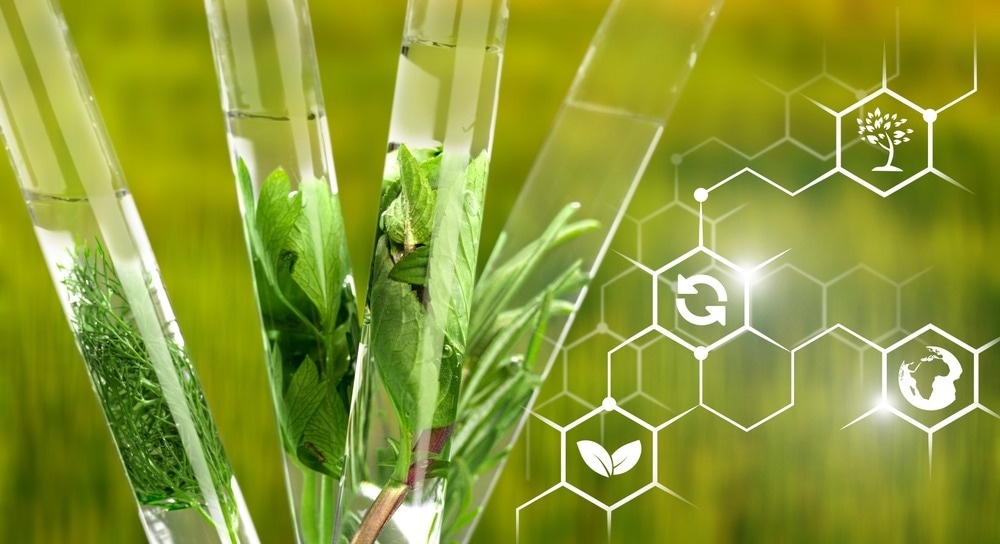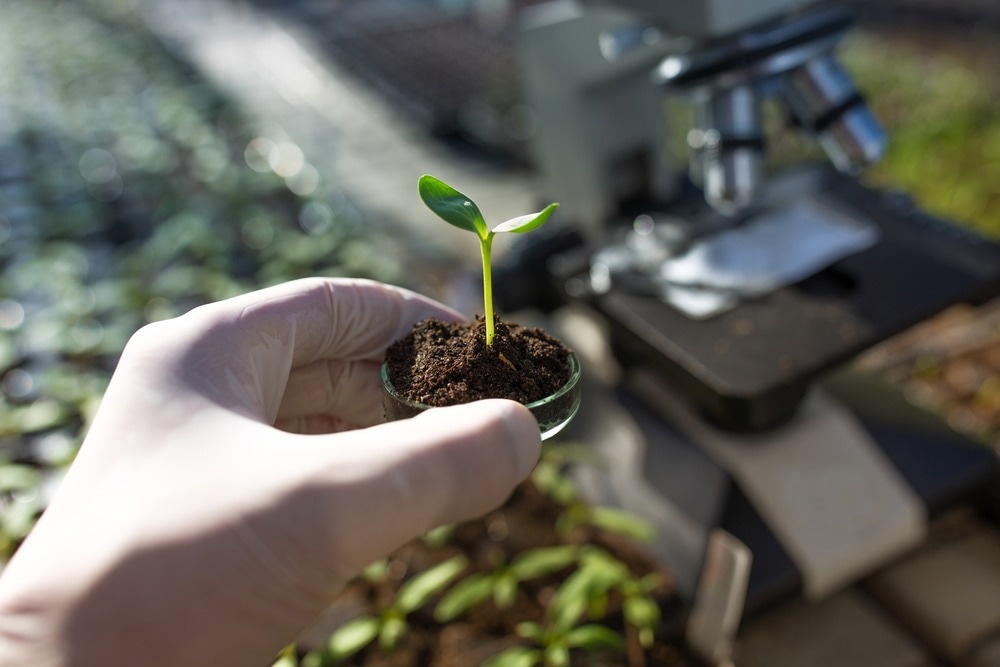Explore the latest developments in agrochemical regulatory trends and learn how this sector navigates compliance and safety to ensure crop production.

Image Credit: Billion Photos/Shutterstock.com
Global agrochemical regulatory trends have been changing due to agricultural sector innovations and technological advancements. The Food and Agriculture Organisation (FAO) of the United Nations estimated the need to increase food production by 70% due to the possibility of the global population reaching 9 billion by 2050.1 To enhance crop yield, reduce losses due to pathogenic infestations, and to protect livestock, different types of agrochemicals are being explored.
Considering different adverse effects linked to excessive use of agrochemicals, such as synthetic fertilizers, pesticides, herbicides, fungicides, and nematicides, governments and policymakers across the world have implemented regulations to minimize the misuse of these chemicals.2 This article focuses on the agrochemical regulatory trends in crop protection, particularly the extent of compliance with the rules formulated to ensure its safe use.
The Needs and Precautions Shaping Agrochemical Regulatory Trends
Farmers use fertilizers to enhance the crop yield that is protected from pests and pathogens via appropriate pesticide usage. Similarly, farm animals are protected from disease through vaccination, immersion dipping, and oral medications. These agrochemicals are manufactured in different forms, such as powders, granules, gases, and liquids, and are applied manually or through specialized equipment like aircraft with self-propelled sprayers.
Many individuals are exposed to agrochemicals during production, storage, transport, application, spillage, and disposal. It must be noted that some of the chemicals are poisonous to humans, wildlife, and livestock. Indiscriminate use of these chemicals could result in air, water, or soil pollution and could be present in high residual levels in foodstuffs. It is for this reason that a good understanding of agrochemical regulatory trends is essential.
Agrochemical regulatory bodies assess the risks of individual chemicals used to enhance crop production and protect them. Acute or chronic exposure to some pesticides may have immediate or even longer-term manifestations of chronic illnesses in humans. For instance, pesticide exposure may cause headaches, vomiting, cancer, neurological damage, and endocrine disruption.3 Therefore, to minimize or eliminate the harmful effects of agrochemicals, several rules and regulations have been formulated, which are collectively referred to as agrochemical regulatory trends.
Factors that Control Agrochemical Regulatory Trends
There are several factors that influence agrochemical regulatory trends with respect to safety, compliance, and so on. It is important to understand the hazardous nature of pesticides by carefully studying the labels. There is a huge gap in understanding the importance of following safety measures while applying agrochemicals. A large extent of human exposure to pesticides has been attributed to a lack of caution, ignorance, and limited understanding of the risk factors that have helped shape the latest agrochemical regulatory trends.
The economic burden often compels farmers to use cost-effective one-time spray pesticides or non-registered pesticides. However, this practice results in high levels of pesticide residue on the agricultural produce. A risk assessment study conducted in the Philippines indicated that a lack of adequate training from the Department of Agriculture about the safety methods and correct use of pesticides accounted for poor agrochemical practices in that area.4 In this respect, the Philippines was deemed to have some catching up to do with state-of-the-art global agrochemical regulatory trends.
Inspection of food samples is undertaken in both exporting and importing countries to understand compliance with the national agrochemical regulatory trends. However, continual low inspection levels have been documented in the US, particularly for imported fruits and vegetables.5
The lack of global harmonization of the Maximum Residue Limits (MRL) for pesticides significantly influences the prevailing agrochemical regulatory trends. The large-scale use of agrochemicals, mostly pesticides, has become a major issue in many exporting countries. Many of these countries fail to comply with the MRLs of the importing countries. The presence of unauthorized or unapproved pesticides accounts for 95% of overall violations of compliance with national agrochemical regulatory trends.6 Implementation of legislation and policies are affected due to the lack of resources and staff to conduct pesticide analyses.
Assessment of Current Agrochemical Regulatory Trends
Agrochemical regulatory trends, particularly with regard to compliance with the rules and recommendations, are being continuously assessed globally. For instance, the European Commission has recommended an acceptable range of pesticide residues in varied foodstuffs, including crop products. Compliance with this recommended range is evaluated periodically globally.
In 2019, many food samples were randomly tested in the European Union (EU), among which around 96% showed the presence of pesticide residues below the MRL.7 However, an increase in pesticide residue was observed in rice and rice products.8 This estimation resulted in the rejection, recall, and destruction of the product.

Image Credit: Budimir Jevtic/Shutterstock.com
An EU-coordinated control program (EUCP) also observed the presence of non-approved (in the EU) pesticide residues, such as thiamethoxam and acephate, in some of the imported products. In contrast to EU-derived samples that indicated 2.7% MRL exceedance and 1.3% non-compliance, a higher non-compliance level with MRL was observed in crop samples that originated from a third country.9 A 2020 Pesticide Residues in Food (PRiF) report indicated that pesticide residue levels of 2.52% of the tested samples were above the MRL.10
The US Food and Drug Administration (FDA) analyzed a total of 476 pesticide residue levels on fresh vegetables between 1996 and 2006. The domestically grown vegetables exhibited significantly lower harmful residue levels compared to the imported ones. The contaminated rates varied based on the country from which it was imported, and it was not dependent on the economic condition of the region or country. Interestingly, the presence of some agrochemicals was significantly more than others.11
The US Environmental Protection Agency allows the export of non-registered or non-approved pesticides, particularly to developing countries that lack a framework or pesticide legislation to determine imported pesticides.12 Similarly, prohibited pesticides are also exported by the EU to developing countries under the name of a substance or pesticide mixture. In 2021, this incident was brought to the attention of the EU public by non-governmental agencies. Considering the European Green Deal and the framework of cooperation with third countries, the EU Commission has promised that banned agrochemicals will not be manufactured for only export purposes.2
Recent Agrochemical Regulatory Trends and Future Outlook
In 2022, the ISAA Symposium attended by 400 delegates, presented the newest agrochemical application techniques and discussed many novel products and advances.13 Currently, an increase in the use of biopesticides instead of chemical pesticides is being observed.
The EU has targeted to reduce the use of chemical pesticides by 50% by 2030. It must be noted that each member state of the EU has its own reduction target within the defined parameters. In addition, a more comprehensive environment-friendly pest control rule has been formulated, where all farmers are encouraged to practice Integrated Pest Management (IPM).
During this transition, farmers could be supported by the EU's Common Agricultural Policy (CAP). In sum, a close collaboration between farmers and policymakers will ensure we work towards generating more sustainable agrochemical regulatory trends, promoting safety, compliance, and economies of scale.
Sources:
Global agriculture towards 2050. High Level Expert Forum. https://www.fao.org/fileadmin/templates/wsfs/docs/Issues_papers/HLEF2050_Global_Agriculture.pdf. 2009;
The use of pesticides in developing countries and their impact on health and the right to food. European Parliament. www.europarl.europa.eu/.../Pesticides%20health%20and%20food.pdf. 2021;
Leong WH, Teh SY, Hossain MM, Nadarajaw T, Zabidi-Hussin Z, Chin SY, Lai KS, Lim SHE. Application, monitoring and adverse effects in pesticide use: the importance of reinforcement of Good Agricultural Practices (GAPs). J Environ Manag. 2020; 260:109987
Snelder DJ, Masipiqueña MD, De Snoo GR. Risk assessment of pesticide usage by smallholder farmers in the Cagayan Valley (Philippines). Crop Prot. 2008; 27:747–762.
Neff RA, Hartle JC, Laestadius LI, Dolan K, Rosenthal AC, Nachman KE. A comparative study of allowable pesticide residue levels on produce in the United States. Glob Health. 2012; 8:1–14.
Reeves WR, McGuire MK, Stokes M, Vicini JL. Assessing the safety of pesticides in food: how current regulations protect human health. Adv Nutr. 2019; 10:80–88.
Camanzi L, Hammoudi A, Malorgio G. Stakeholder perception of EU food safety governance: the case of EU fruit and vegetable imports from Southern Mediterranean Countries. New Medit: Mediterranean Journal of Economics, Agriculture and Environment= Revue Méditerranéenne dʹEconomie Agriculture et Environment. 2019; 18(4).
Cabrera LC, Pastor PM. The 2019 European Union report on pesticide residues in food. EFSA J. 2021; 19:6491.
The 2019 European Union report on pesticide residues in food.European Food Safety Authority. https://efsa.onlinelibrary.wiley.com/doi/10.2903/j.efsa.2021.6491. 2021;
The Expert Committee on Pesticide Residues in Food (PRiF) Annual Report 2020. Expert Committee on Pesticide Residues in Food. assets.publishing.service.gov.uk/.../...es_food_annual_report_2020.pdf. 2020; Accessed December 7, 2023.
Galt RE. Scaling up political ecology: The case of illegal pesticides on fresh vegetables imported into the United States, 1996–2006. Ann Assoc Am Geogr. 2010;100:327–355
Handford CE, Elliott CT, Campbell K. A review of the global pesticide legislation and the scale of challenge in reaching the global harmonization of food safety standards. Integr Environ Assess Manag. 2015;11:525–536
ISAA Symposium 2022. www.isaa2022.org/wp-content/uploads/2022/04/isaa2022-programme-1.pdf. 2022;
Further Reading